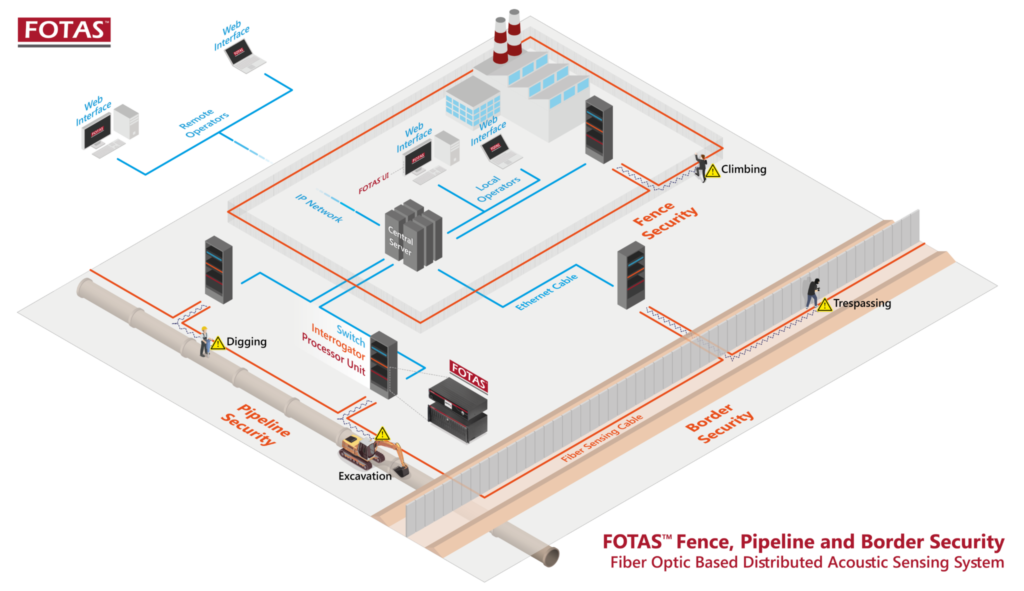Telecom Infrastructure Security: Detection of Activities Through Fiber Cables Using Laser and Artificial Intelligence
Abstract
This paper introduces a novel approach to enhancing telecom infrastructure security through the use of Distributed Acoustic Sensing (DAS) technology combined with laser signal detection and artificial intelligence (AI). Fiber optic cables, essential for high-speed data transmission, are vulnerable to various security threats such as physical damage, unauthorized access, and environmental factors. By utilizing laser signals transmitted through fiber cables and analyzing these signals with AI algorithms, this study enables real-time monitoring and assessment of the security of telecom infrastructure. The system detects human movements, vehicle and machinery presence, and excavation activities, and provides visual feedback on screens for immediate monitoring and intervention. This approach significantly enhances infrastructure security by enabling prompt detection and rapid response to potential threats.
Introduction
“The Importance of Telecom Infrastructure Security
Telecommunications infrastructure is vital for modern connectivity, but it faces significant security risks such as physical damage, unauthorized access, and environmental threats. Fiber optic cables, crucial for high-speed data transmission, are particularly vulnerable to these risks.
Distributed Acoustic Sensing (DAS) technology offers a solution by turning fiber optic cables into distributed sensors. This system detects acoustic events along the cable using Rayleigh scattering, where changes in the scattered light indicate disturbances such as human movement, vehicle traffic, and excavation.
The Role of AI in Enhancing DAS Capabilities
Combining DAS with laser signal detection and artificial intelligence (AI) enhances monitoring capabilities. Laser pulses provide detailed, real-time data, while AI algorithms analyze these signals to accurately classify and identify different activities. This integrated approach allows for efficient, real-time security monitoring of telecom infrastructure, enabling prompt detection and response to potential threats.

The system uses artificial intelligence to classify and analyze detected signals:
Methodology
- Anomaly Detection: Continuous monitoring with anomaly detection models identifies unusual Detected anomalies are forwarded to the classification model.
- Classification: The classification model determines the type of event, such as human movement, vehicle activity, or excavation. This model employs 1-dimensional Convolutional Neural Networks (CNNs) with an input shape of (20000, 1). The activation function used is softmax, which provides prediction probabilities for each event class.
System Architecture
Fiber Optic Distributed Acoustic Sensing System Overview
The core of this system is the Distributed Acoustic Sensing (DAS) technology, which leverages the principles of Rayleigh scattering within fiber optic cables.
- Rayleigh Scattering: The system measures the phase changes in Rayleigh scattered light to detect external acoustic sources. The phase change Δ ∅ is given by:
where n is the refractive index, ΔL is the length of scattering, and λ is the wavelength of light.
- Signal Processing: Signals collected by the DAS system are modulated and converted into time series data, which is digitized for analysis.
DAS Technology
How Distributed Acoustic Sensing (DAS) Works
Overview; DAS technology turns the entire length of fiber optic cables into a distributed sensor, providing real-time monitoring capabilities. It uses the Phase-OTDR (Phase Sensitive Optical Time Domain Reflectometry) method to analyze backscattered Rayleigh signals from acoustic disturbances.
Detection: The intensity of Rayleigh scattering IRayleigh(T) as a function of time T is modeled as
where I0 is the initial intensity, and Lc is the characteristic length of the fiber.
Filters and Signal Processing
Signal Processing Techniques for DAS Systems
To ensure accurate detection and reduce noise, various filters are applied to the data:
1.Wavelet Transform: This method analyzes signals in different frequency domains and is defined by:
where W(a,b) is ihe wavelet coefficient, x(t) is the signal, ψ is the wavelet function, a is the scale, and b is the translation.
2.High-Pass Filter (HPF): Preserves high-frequency components and attenuates low-frequency noise, defined by:
where ƒc is the cutoff frequency, ƒ is the signal frequency, and 𝑛 is the filter order.
Here’s the corrected text:
3. Band-Pass Filter: Allows frequencies within a specified range to pass, given by:
where ƒc1 and ƒc2 are cutoff frequencies, W1 and W2 are bandwidths, and 𝑛 is the filter order.
Results
The system was tested in the field, with the fiber optic cable laid at two different depths: 1 meter for vehicle detection and 30 centimeters for walking and digging. The signals were analyzed for walking, vehicle trespassing, and manual digging activities, with results visualized using waterfall plots and time-amplitude graphs. The signal analysis revealed clear distinctions between different types of activities, demonstrating the effectiveness of the system.

Conclusion
The integration of DAS technology with AI algorithms provides a robust solution for real-time monitoring of telecom infrastructure. The system’s ability to detect and classify various activities along the fiber optic cable route enhances security and facilitates quick response to potential threats.
In this study we presented
References
[1] Özkan, Erkan & Erkorkmaz, Tayfun & Cesur, Berke & Yetik, Hasan & Uludağ, Umut & Older, İbrahim.(2020). FOTAS (Fiber Optic Based Acoustic Sensing System): requirements, design, implementation, tests and results. 10.1117/12.2581713.




